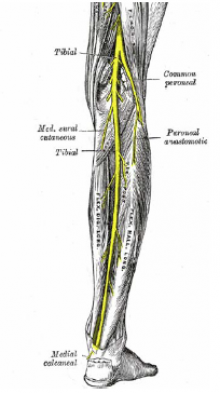If you would like to see more information on this case study, click here!
You can request this case study and a WCDE staff member will get back to you.
 In May 2006, David Bishop, a 3rd year engineering student at the University of Waterloo, injured his knee while playing soccer. He has damaged his peroneal nerve, torn his posterior cruciate ligament, broken off the fibular head, and torn the hamstring muscle that attaches to the fibular head. The long term consequence of the nerve damage was that he was no longer able to control the lofting or twisting outwards of his foot. This condition is commonly called foot drop. David was supplied with a traditional foot brace, and ankle foot orthotic, bur found that it did not provide the combination of support, range of motion, and comfort that would allow him to return to an active lifestyle. For his final year design project, he chose to design a new foot brace that would be suitable for long distance running.
In May 2006, David Bishop, a 3rd year engineering student at the University of Waterloo, injured his knee while playing soccer. He has damaged his peroneal nerve, torn his posterior cruciate ligament, broken off the fibular head, and torn the hamstring muscle that attaches to the fibular head. The long term consequence of the nerve damage was that he was no longer able to control the lofting or twisting outwards of his foot. This condition is commonly called foot drop. David was supplied with a traditional foot brace, and ankle foot orthotic, bur found that it did not provide the combination of support, range of motion, and comfort that would allow him to return to an active lifestyle. For his final year design project, he chose to design a new foot brace that would be suitable for long distance running.
This case study is intended to illustrate the product design process, including clear definition of the problem, benchmarking of existing solutions, generation of alternatives, their evaluation, choosing the best option, and verification using prototyping.
If you would like to see more information on this case study, click here!
You can request this case study and a WCDE staff member will get back to you.
Contact Waterloo Cases in Design Engineering
Steve Lambert
Tel: (519) 888-4728
Email: steve@uwaterloo.ca
The University of Waterloo acknowledges that much of our work takes place on the traditional territory of the Neutral, Anishinaabeg and Haudenosaunee peoples. Our main campus is situated on the Haldimand Tract, the land granted to the Six Nations that includes six miles on each side of the Grand River. Our active work toward reconciliation takes place across our campuses through research, learning, teaching, and community building, and is co-ordinated within the Office of Indigenous Relations.